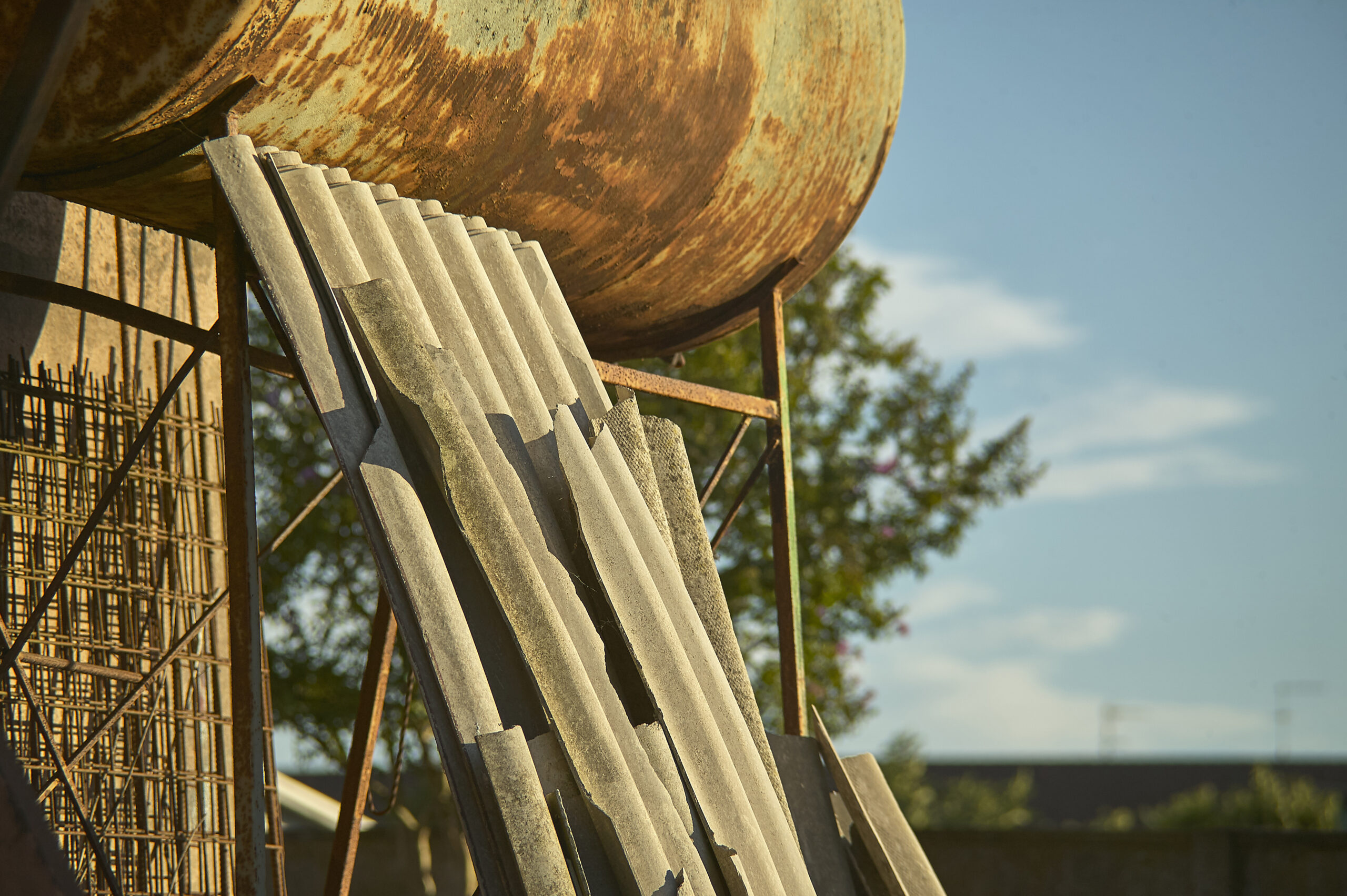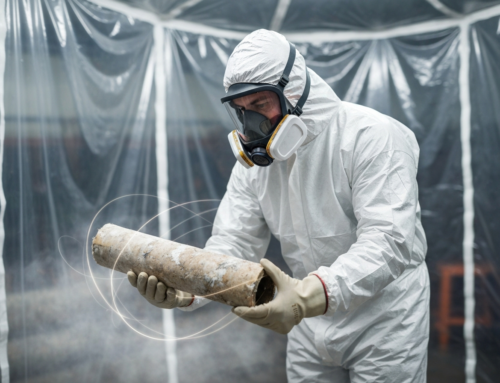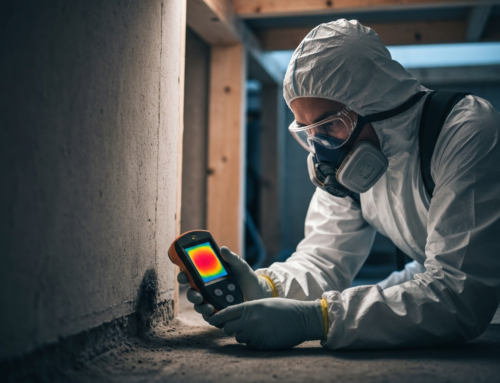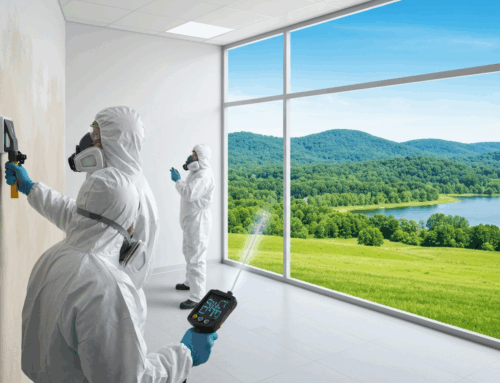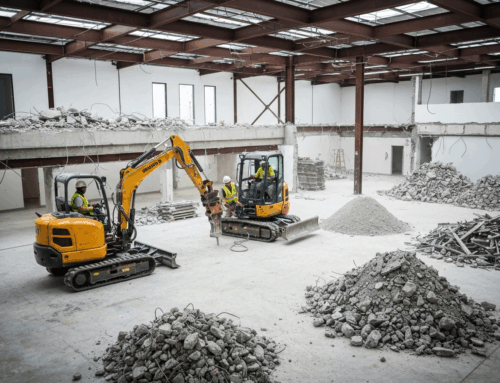The Hidden Dangers of Asbestos in South Carolina
Asbestos is a naturally occurring fibrous mineral that was once widely used in construction and manufacturing due to its exceptional heat resistance, tensile strength, and insulating properties. From the early 20th century through the late 1970s, it was incorporated into a vast array of building materials and products found in homes, schools, commercial buildings, and industrial facilities across the United States, including many structures right here in South Carolina. Common applications included insulation for pipes, boilers, and attics, ceiling and floor tiles, roofing materials, joint compound, textiles, and even certain automotive parts like brake linings.
Despite its past utility, the severe health risks associated with asbestos exposure are now well-documented. When materials containing asbestos are disturbed or damaged, microscopic fibers are released into the air. These fibers are easily inhaled or ingested, and once inside the body, they can become lodged in tissues, particularly in the lungs and abdomen. Over time, typically decades after the initial exposure, these embedded fibers can cause serious and often fatal diseases. Because the latency period is so long, individuals exposed many years ago may only now be facing diagnoses.
The primary danger lies in the friable nature of certain asbestos-containing materials (ACM). Friable materials are those that can be easily crumbled or reduced to powder by hand pressure, such as spray-on insulation or damaged pipe lagging. When these materials deteriorate or are disrupted during renovations, demolition, or even simple maintenance activities, the risk of fiber release is significantly higher. Non-friable materials, like intact floor tiles or cement sheets, pose less risk if undisturbed but can still release dangerous fibers if cut, drilled, or broken.
Given the extensive historical use of asbestos, its presence is not just an issue in old industrial sites but can be a concern in many older residential and commercial properties throughout South Carolina. Homeowners undertaking DIY projects, contractors working on renovations, and workers in various trades may unknowingly disturb ACM, putting themselves and others at risk. Recognizing the potential presence of asbestos and understanding the necessary precautions is the first critical step in protecting public health.
Understanding South Carolina Asbestos Removal Laws
To mitigate the significant health hazards posed by asbestos, both the federal government and the state of South Carolina have established comprehensive regulations governing its handling, removal, and disposal. The primary aim of these regulations is to protect workers and the public from inhaling or ingesting airborne asbestos fibers. While federal laws, largely enforced by the Environmental Protection Agency (EPA) and the Occupational Safety and Health Administration (OSHA), provide a baseline, state regulations in South Carolina often mirror or enhance these requirements, particularly concerning South Carolina asbestos removal laws.
In South Carolina, the Department of Health and Environmental Control (DHEC) is the state agency responsible for overseeing and enforcing asbestos regulations. These regulations are detailed in the South Carolina DHEC Asbestos Protection Program. These rules cover a wide range of activities, including inspections to identify asbestos, notification requirements for abatement projects, licensing and training for asbestos professionals, specific procedures for safe removal (known as abatement), and proper disposal methods.
Compliance with these laws is not merely a bureaucratic hurdle; it is essential for preventing asbestos exposure and safeguarding health. Ignoring or circumventing these regulations can lead to serious consequences, including significant fines, legal penalties, and, most importantly, putting individuals at risk of developing life-threatening asbestos-related diseases. Whether you are a homeowner, a property manager, or a contractor, understanding and adhering to South Carolina asbestos removal laws is paramount.
The state’s regulatory framework is designed to ensure that asbestos is managed safely from identification through final disposal. This involves a multi-step process that typically begins with an inspection and survey to determine the presence and condition of asbestos-containing materials. If ACM is found and will be disturbed by renovation or demolition activities, strict procedures must be followed for its removal. These procedures are complex and require specialized knowledge, equipment, and training, highlighting the importance of engaging qualified professionals.
Licensing and Training Rules for Asbestos Professionals in SC
South Carolina asbestos removal laws place a strong emphasis on ensuring that individuals and companies handling asbestos are properly trained and licensed. This is a critical component of the state’s strategy to prevent improper abatement practices that could release dangerous fibers into the environment and endanger public health. The South Carolina Department of Health and Environmental Control (DHEC) administers the licensing and training requirements for asbestos professionals working within the state.
Anyone involved in asbestos abatement activities in South Carolina, including workers, supervisors, inspectors, management planners, and project designers, must obtain the appropriate state license. Obtaining a license requires completing state-approved training courses and passing certification exams. These courses cover essential topics such as:
- The health effects of asbestos exposure
- Identification of asbestos-containing materials
- Regulatory requirements (federal and state)
- Work area preparation and containment procedures
- Proper use of personal protective equipment (PPE)
- Abatement methods and engineering controls
- Proper handling, packaging, and labeling of asbestos waste
- Decontamination procedures
- Air monitoring requirements
The duration and content of the training vary depending on the specific discipline (e.g., worker vs. supervisor vs. inspector). For instance, asbestos abatement workers typically need to complete an initial training course and pass an exam, followed by annual refresher courses to maintain their certification. Supervisors require more extensive training that includes planning, overseeing, and directing abatement projects safely.
Contractors who perform asbestos abatement services in South Carolina must also be licensed by the state. This contractor license requires the company to employ properly trained and licensed personnel, follow all regulatory requirements, maintain adequate insurance, and adhere to specific work practice standards. Hiring a licensed asbestos abatement contractor in South Carolina is crucial because it provides assurance that the work will be performed by professionals who understand the risks and are equipped to handle asbestos safely and in compliance with state and federal laws.
Verification of licensing is an important step for anyone planning renovation or demolition work where asbestos may be present. Property owners and managers should always request proof of current South Carolina asbestos licensing and certification from any contractor they consider hiring for asbestos-related work. Utilizing unlicensed or improperly trained individuals for asbestos removal is not only illegal but significantly increases the risk of improper procedures, leading to contamination and potential health problems for occupants and neighboring properties.
The licensing framework serves as a vital safeguard, ensuring that abatement projects are conducted with the necessary expertise and attention to detail required to protect public health and the environment from the dangers of asbestos fibers. It reinforces the importance of professional handling for this hazardous material.
Asbestos Inspections Required for Renovation and Demolition Projects
A cornerstone of South Carolina asbestos removal laws and federal regulations is the requirement for thorough inspections to identify asbestos-containing materials (ACM) before renovation or demolition activities begin in many types of buildings. This proactive step is essential because disturbing ACM without proper precautions is the primary way asbestos fibers are released into the air, creating health hazards.
Before undertaking any renovation or demolition project in South Carolina, the regulations generally require that a comprehensive asbestos survey or inspection be conducted by a certified asbestos inspector. This inspection must cover all areas potentially impacted by the planned work. The purpose is to locate, identify, and assess the condition of any ACM present. The inspector will collect samples of suspected materials, which are then sent to an accredited laboratory for analysis to confirm the presence of asbestos.
The scope of projects requiring inspection is broad. Generally, inspections are mandated for demolition projects involving any facility and for renovation projects that meet specific thresholds based on the amount of ACM that will be disturbed. These thresholds are defined in the regulations and are based on the quantity of friable or non-friable asbestos-containing material involved. For example, disturbing a certain linear footage of asbestos pipe insulation or a specific square footage of asbestos-containing flooring may trigger the inspection and subsequent abatement requirements.
The inspection report is a critical document. It details the location, type, quantity, and condition of all identified ACM within the project area. This information is vital for developing an effective asbestos abatement plan if removal is necessary. Regulatory agencies, like SC DHEC, require access to these inspection reports.
Once ACM is identified and the project will disturb it above regulatory thresholds, specific notification requirements come into play. Property owners or the designated asbestos abatement contractor must submit a notification form to SC DHEC before the abatement work begins. This notification provides details about the project, including the location, the type and amount of ACM to be removed, the abatement procedures, and the start and end dates of the project. There is typically a waiting period after notification before work can commence, allowing regulatory agencies time to review the project and conduct inspections if necessary.
Failing to conduct a pre-renovation or pre-demolition asbestos inspection, or neglecting to file the required notifications, is a violation of South Carolina asbestos removal laws and can result in significant penalties. Furthermore, it puts everyone involved in the project and nearby individuals at risk of exposure. Properly identifying and managing asbestos before work begins is a fundamental step in ensuring safety and regulatory compliance.
For those considering demolition or renovation work, understanding these inspection requirements is key. Partnering with experienced professionals who are knowledgeable about South Carolina’s specific regulations ensures that this crucial step is completed correctly and safely. You can learn more about safely addressing hazardous materials before demolition in South Carolina by visiting this page, which reinforces the importance of professional assessment.
Important Exemptions in South Carolina Asbestos Regulations
While South Carolina asbestos removal laws are comprehensive and designed to protect public health, there are specific, limited exemptions to some of the requirements, particularly concerning inspections for certain residential properties. It is crucial to understand these exemptions precisely and recognize that even when an exemption applies, the inherent health risks of asbestos remain, and safety precautions are still strongly recommended.
One notable exemption in South Carolina pertains to the mandatory asbestos inspection requirement for renovation or demolition projects in residential buildings that contain four or fewer dwelling units and are occupied only as residences. This includes stand-alone single-family homes. In these specific scenarios, a formal, state-mandated asbestos inspection by a certified inspector is typically not required before renovation or demolition activities.
However, this exemption does not negate the presence of asbestos or the dangers associated with disturbing it. Older homes and multi-family dwellings built before the widespread ban on asbestos still commonly contain ACM in various materials. These materials can include insulation (attic, pipe, boiler), floor tiles and adhesives, ceiling tiles, textured paints (like popcorn ceilings), roofing materials, siding, and more.
Therefore, even though an inspection may not be legally required for a single-family home renovation, homeowners and contractors should proceed with extreme caution. Disturbing these materials without proper identification and handling can release asbestos fibers, posing a serious health risk to the occupants, workers, and potentially neighbors. Best practices strongly advise assuming that asbestos is present in materials likely to contain it in homes built before 1980 and either having the materials tested or treating them as if they contain asbestos.
For homeowners planning DIY projects in older residences falling under this exemption, it is paramount to be aware of potential ACM. Simple tasks like removing old floor tiles, scraping textured ceilings, or replacing pipe insulation could inadvertently lead to significant asbestos exposure. Without the knowledge and specialized equipment used by professionals, containing fibers and preventing contamination is extremely difficult.
Even when exempt from mandatory inspection, individuals undertaking renovation or demolition are still responsible for managing any asbestos-containing materials safely if encountered. This includes using proper work practices to minimize fiber release and ensuring that any asbestos waste is disposed of correctly at an authorized landfill. Failure to follow safe handling and disposal practices, even in an exempt property, can lead to health risks and potential legal liabilities if contamination occurs.
In summary, while certain residential properties may be exempt from the mandatory pre-project inspection under South Carolina asbestos removal laws, this exemption is not an excuse to ignore the potential presence and dangers of asbestos. Prudence dictates caution and, ideally, professional assessment and handling of suspected materials to ensure the health and safety of everyone involved and the surrounding community.
Ensuring Safe Handling and Disposal of Asbestos Materials
Proper handling and disposal are critical steps in the process of asbestos abatement, governed by strict protocols under South Carolina asbestos removal laws and federal regulations. Once asbestos-containing materials (ACM) have been identified and it’s determined that removal is necessary, the focus shifts to performing the work safely to prevent the release of dangerous fibers. This is where the expertise of licensed and trained professionals becomes indispensable.
Safe handling of ACM during removal involves a series of controlled procedures designed to minimize disturbance and capture any fibers that do become airborne. These procedures typically include:
- Containment: The work area is sealed off from the rest of the building using plastic sheeting and negative air pressure systems. Negative air pressure pulls air into the containment area, preventing fibers from escaping to clean areas.
- Wetting Materials: ACM is often wetted down with a specialized liquid (amended water) before and during removal. This helps to bind the fibers together, preventing them from becoming airborne when the material is disturbed.
- Careful Removal Techniques: Materials are carefully dismantled or removed in intact sections whenever possible, rather than broken or crumbled. This minimizes fiber release.
- Personal Protective Equipment (PPE): Workers performing abatement wear specialized respiratory protection (such as HEPA-filtered respirators) and disposable protective clothing to prevent inhaling fibers or carrying them out of the work area.
- Air Monitoring: During and after the abatement process, air monitoring may be conducted to ensure that fiber levels within and outside the containment area remain below safe limits.
- Decontamination: Workers and equipment undergo a multi-stage decontamination process before leaving the containment area to remove any residual fibers.
Once the ACM is removed, it must be properly packaged for transport and disposal. Asbestos waste must be sealed in leak-tight containers, typically heavy-duty plastic bags or sheeting, and clearly labeled with specific asbestos warning labels. These labels communicate the hazardous nature of the contents to anyone handling the waste.
Transportation of asbestos waste must comply with Department of Transportation (DOT) regulations. The waste must be transported in covered, leak-tight vehicles to prevent any accidental release during transit.
Disposal of asbestos waste in South Carolina is only permitted at landfills specifically authorized by SC DHEC to accept asbestos. These landfills have designated areas for burying asbestos waste in a way that prevents future fiber release. This often involves covering the waste with a layer of soil or other material at the end of each operating day.
Improper disposal, such as placing asbestos waste in regular trash bins or unpermitted landfills, is illegal and poses a significant risk to sanitation workers, the environment, and the public. It’s crucial to use only approved methods and facilities for asbestos waste disposal.
Navigating these complex handling and disposal requirements underscores the value of hiring a qualified asbestos abatement contractor. They possess the necessary training, equipment, and knowledge of South Carolina asbestos removal laws to perform the work safely and ensure that all waste is managed according to stringent regulations. Attempting to handle asbestos without this expertise can lead to dangerous exposures and costly legal issues.
Health Impacts of Asbestos Exposure and Legal Rights
Exposure to asbestos fibers is the sole known cause of malignant mesothelioma, a rare and aggressive cancer that affects the lining of the lungs, abdomen, heart, or testicles. Sadly, by the time mesothelioma is diagnosed, it is often at an advanced stage, and the prognosis is poor. The long latency period, often 20 to 50 years after initial exposure, means that individuals exposed decades ago, perhaps unknowingly in their workplace or home, are now receiving devastating diagnoses.
Beyond mesothelioma, asbestos exposure is also linked to other serious respiratory illnesses, including asbestos-related lung cancer and asbestosis. Asbestos-related lung cancer is clinically similar to lung cancer caused by smoking but occurs in individuals who have been exposed to asbestos. Asbestosis is a chronic, non-cancerous respiratory disease caused by the inhalation of large amounts of asbestos fibers, leading to scarring of the lungs and difficulty breathing.
The development of these diseases is directly related to the cumulative dose of asbestos fibers inhaled. While a single, brief exposure is less likely to cause disease, any exposure carries some level of risk, and repeated or prolonged exposure significantly increases the likelihood of developing an asbestos-related illness.
For individuals in South Carolina diagnosed with an asbestos-related disease, understanding their legal rights is an important consideration during a difficult time. Many cases of asbestos exposure occurred in occupational settings where employers or product manufacturers were aware, or should have been aware, of the dangers of asbestos but failed to provide adequate protection or warnings to workers or consumers.
Individuals diagnosed with mesothelioma, asbestos lung cancer, or asbestosis due to past asbestos exposure may be entitled to seek compensation for medical expenses, lost wages, pain and suffering, and other damages. Legal claims can be pursued against the parties responsible for the exposure, which might include former employers, manufacturers of asbestos-containing products, or owners of properties where exposure occurred.
The legal process for pursuing asbestos claims can be complex, often requiring extensive investigation to identify the sources and timing of past exposure, sometimes going back many decades. Evidence might include employment history, witness testimony, product identification, and medical records. Because of the specialized nature of these cases and the corporate bankruptcies related to asbestos liabilities, many claims are handled through asbestos bankruptcy trusts established by companies that used or produced asbestos.
Navigating these legal avenues while also dealing with a serious health diagnosis requires the guidance of experienced legal professionals who specialize in asbestos litigation. They can help victims and their families understand their rights, identify potentially responsible parties, and pursue the compensation needed to cover medical care and provide financial security.
For those concerned about past exposure or facing a diagnosis, seeking medical advice is the first priority. Understanding the health risks highlights why adherence to South Carolina asbestos removal laws and safe handling practices is so critical today, preventing future generations from facing similar health challenges.
Have questions? Contact us here.

